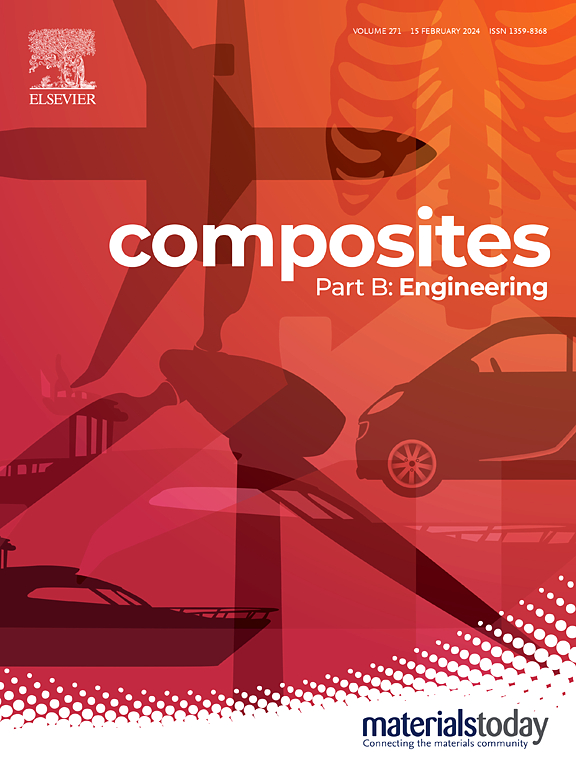具有线性和交联桥接结构的自修复可回收聚酰亚胺杂化膜
IF 12.7
1区 材料科学
Q1 ENGINEERING, MULTIDISCIPLINARY
引用次数: 0
摘要
聚酰亚胺(PI)在长期的应力作用下会逐渐损坏,导致设备故障。目前的研究还面临着再生式PI混合电介质性能下降的难题。刚性的分子结构阻碍了传统PI材料在损伤后的自愈或可循环利用能力和性能恢复。本文成功研制了一种自修复交联聚酰亚胺(SCPI)。三功能醛和双功能醛在SCPI膜中形成的线性和交联桥接结构平衡了体系中可逆结构与性能恢复之间的矛盾。SCPI薄膜对多种形式的损伤表现出优异的愈合能力和聚合物溶液循环性能。交联结构使薄膜保持了极强的抗拉强度(σt = 106 MPa)和电击穿强度(Eb = 418 MV/m)。在此基础上,采用真空浸渍法制备SCPI前驱体凝胶与碳纤维复合,制备了具有较强承载性能的碳纤维增强复合材料(CFRCs)。cf可以高质量地回收多次。该交联PI的合成方案为热固性PI的可持续发展提供了新的思路。本文章由计算机程序翻译,如有差异,请以英文原文为准。
Self-healing and recyclable polyimide hybrid film with linear and crosslinked bridging structure
Polyimide (PI) will be gradually damaged under long-term stress, resulting in equipment failure. The current research still faces the difficulty of the performance degradation of regenerative PI hybrid dielectrics. The rigid molecular structure hinders the self-healable or recyclable capability and performance recovery of traditional PI after damage. Herein, a self-healing crosslinked polyimide (SCPI) has been successfully developed. The linear and crosslinked bridging structures formed by trifunctional aldehydes and bifunctional aldehydes in SCPI films balance the contradiction between reversible structure and performance recovery in the system. The SCPI films show excellent healing ability and polymer-solution recycling properties for many forms of damage. The crosslinked structure enabled the films to maintain their extreme tensile strength (σt = 106 MPa) and electrical breakdown strength (Eb = 418 MV/m). Furthermore, carbon fiber reinforced composites (CFRCs) with strong load-bearing capacity are fabricated by compositing SCPI precursor gel with carbon fibers (CF) using vacuum impregnation method. The CFs can be recycled several times in high quality. This synthesis scheme of crosslinked PI provides a new idea for the sustainable development of thermoset PI.
求助全文
通过发布文献求助,成功后即可免费获取论文全文。
去求助
来源期刊

Composites Part B: Engineering
工程技术-材料科学:复合
CiteScore
24.40
自引率
11.50%
发文量
784
审稿时长
21 days
期刊介绍:
Composites Part B: Engineering is a journal that publishes impactful research of high quality on composite materials. This research is supported by fundamental mechanics and materials science and engineering approaches. The targeted research can cover a wide range of length scales, ranging from nano to micro and meso, and even to the full product and structure level. The journal specifically focuses on engineering applications that involve high performance composites. These applications can range from low volume and high cost to high volume and low cost composite development.
The main goal of the journal is to provide a platform for the prompt publication of original and high quality research. The emphasis is on design, development, modeling, validation, and manufacturing of engineering details and concepts. The journal welcomes both basic research papers and proposals for review articles. Authors are encouraged to address challenges across various application areas. These areas include, but are not limited to, aerospace, automotive, and other surface transportation. The journal also covers energy-related applications, with a focus on renewable energy. Other application areas include infrastructure, off-shore and maritime projects, health care technology, and recreational products.
 求助内容:
求助内容: 应助结果提醒方式:
应助结果提醒方式:


